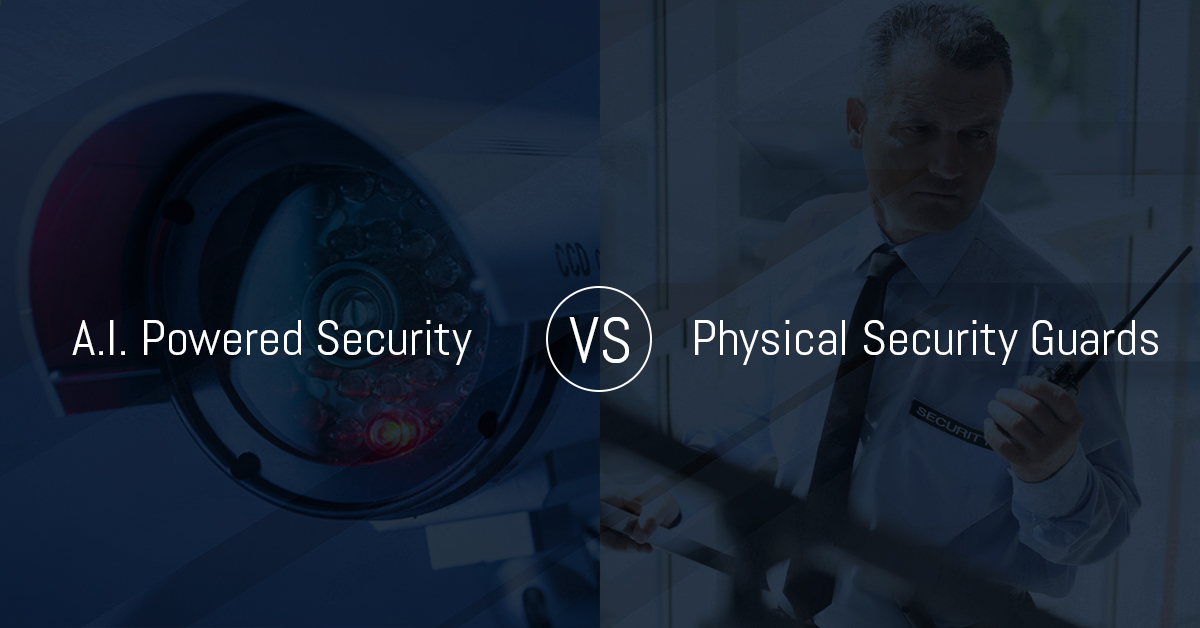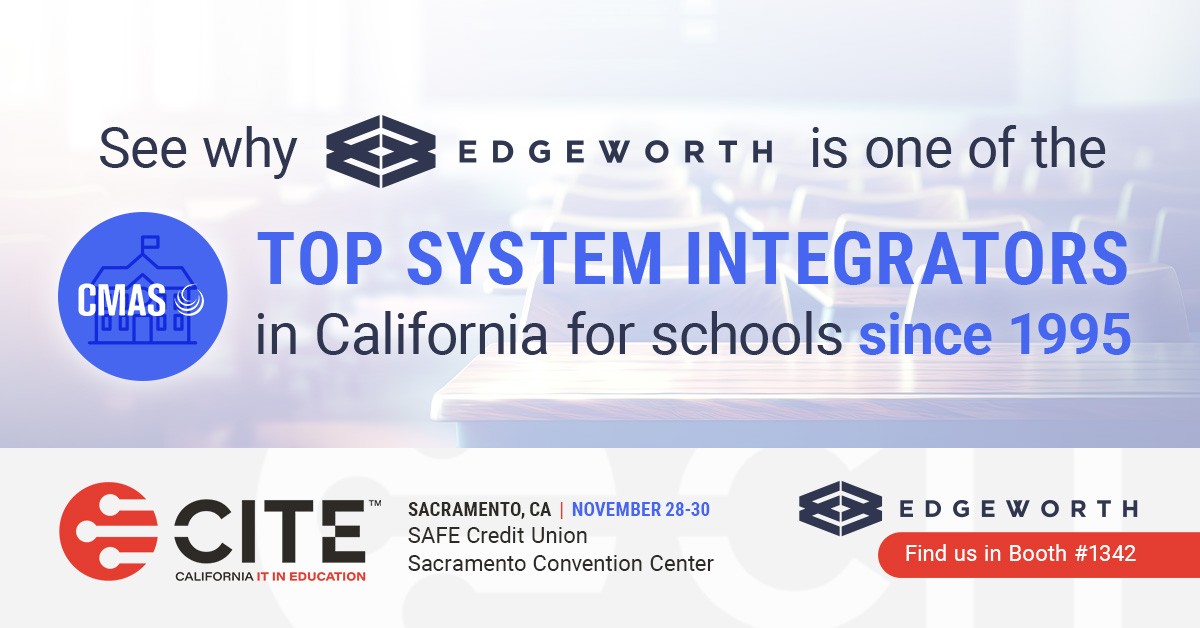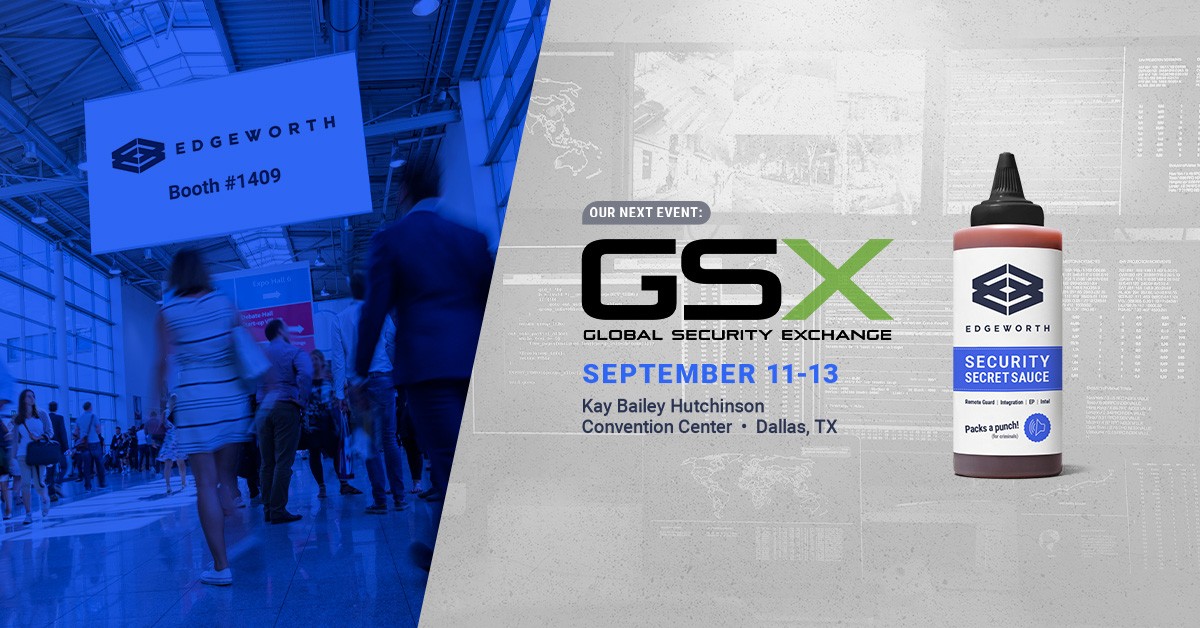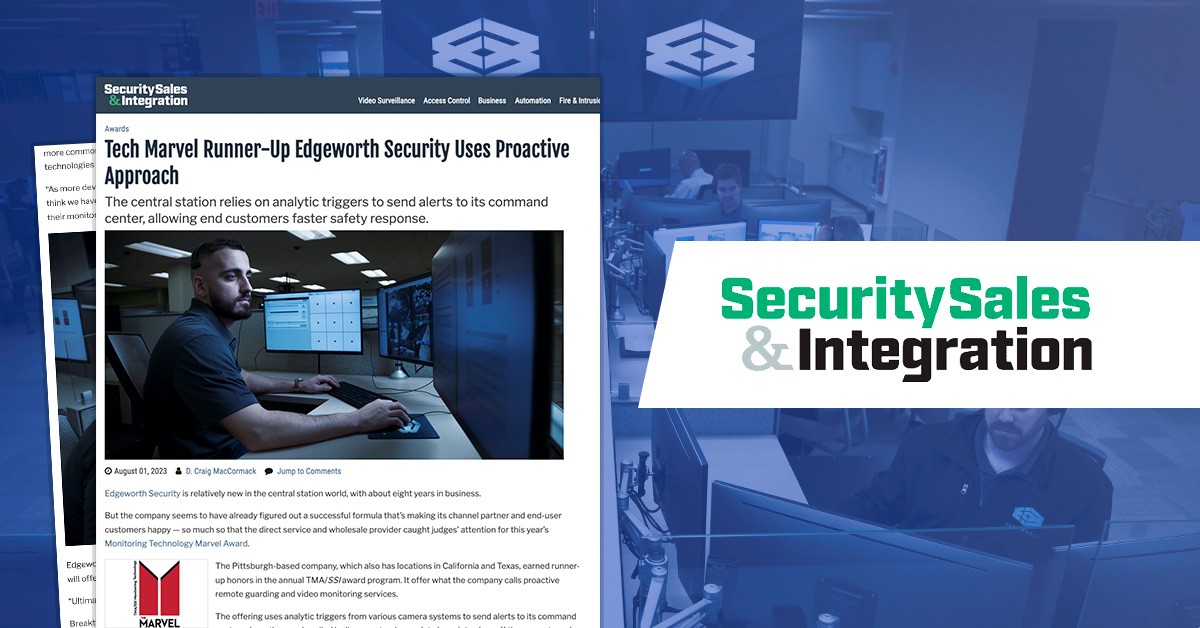
In a recent interview by the Global Association of Risk Professionals (GARP), Edgeworth Security CEO Ken Young shared how Edgeworth uses artificial intelligence, machine learning and advanced analytics to protect against human error and eliminate or significantly reduce the need for on-site guards.
“Employing security guards brings risk, such as theft, insider crime and frivolous litigation, including having a security guard tripping and falling on a property and then suing the property or business owner,” Young says. “There are often demands for very high settlements in these lawsuits, but in replacing guards with AI-enabled cameras, entrepreneurs can avoid that risk.”
Centralized Monitoring for Improved Incident Management
A single Edgeworth agent can remotely cover 25-30 properties with extreme precision and effectiveness with the support of Edgeworth’s smart technology, which features state of the art video surveillance with built-in artificial intelligence. Monitoring takes place at Edgeworth’s state of the art Monitoring Center in Pittsburgh, where highly trained agents with backgrounds in military, law enforcement and customer service proactively manage incidents by communicating directly to threatening or unauthorized individuals. Agents are thoroughly vetted and complete regular, rigorous training including real-life training simulations to ensure they can respond to any incident with authority and professionalism—this type of ongoing training program is often lacking for on-site security guards.
Comprehensive Coverage for More Effective Security
Edgeworth’s Remote Guarding leverages high-definition cameras, digital line barriers, access control systems and other technologies to provide simultaneous, 24/7 monitoring of a client’s entire property—something a physical guard can’t do. These systems feature built-in artificial intelligence and machine learning that are constantly assessing and comparing each property’s pattern of usual activity for deviations and potential disruptions.
This smart technology can tell the difference between human, vehicle, animal and environmental disruptions. When it detects unusual or undesirable activity, the smart technology triggers a digital alert to Edgeworth’s state of the art monitoring center where a highly trained agent actively manages each incident. Edgeworth’s live agents can remotely apply pressure as needed to prevent or neutralize threats. The combination of A.I. systems that are constantly improving through machine learning and live, highly trained agents ensure maximal security effectiveness and protects against human error and eliminates false alarms.
Proactive vs. Reactive Security
At a physically guarded property, security is inherently reactive – guards respond to an event, such as a break-in, after it has already occurred. Physical security is also limited by the fact that guards can only cover one area at a time, are susceptible to distractions, boredom, fatigue and injury, or could even be complicit with the criminals they are hired to repel.
With Remote Guarding, when a security incident happens, Edgeworth’s agents can engage with the trespasser in real-time using voice down live communication, warning them to leave the property, their actions have been recorded, and that police are on the way. This interaction deters 93% of unwanted activity. For those that don’t heed our agent’s warning, our close relationships with law enforcement and active incident management have led to 100% apprehension of suspects.
Cost-Savings
Through the innovative application of our smart technology coupled with the expertise and training of our agents, Edgeworth’s Remote Guarding becomes a force multiplier of security, dramatically improving effectiveness, while also providing significant savings to clients. Most clients save 40% on security costs over traditional guards.
“Our processes and procedures are currently being validated by a major insurer, which could result in lower premiums as the technology proves itself,” Young says. “The reduction of risk to property owners is evident, along with the labor-cost elimination.”




